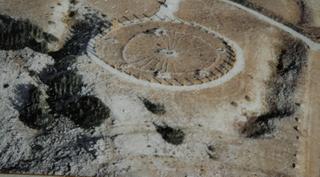Theta wave
Alpha wave
Mu wave
Beta wave
Gamma wave
Current interest in a presentation given through Stanford in a series of 6 videos had brought up for me the question of what consciousness is. A fundamental recognition of what consciousness is, as it is measured. So we speak about the different frequency ranges that are examined as "attributes of that consciousness."
Thalamocortical oscillation involves the synchronous firing of thalamic and cortical neurons at specific frequencies; in the thalamocortical system, the exact frequencies depend on current brain state and mental activityThe understanding I have in regard to this question is whether we could induce those frequency ranges as an "affect" directly through the thalamus to the whole brain. This so as to bring the whole brain toward coherence.
 |
| The human visual pathway. The lateral geniculate nucleus, a region of the thalamus, exhibits thalamocortical oscillation with the visual cortex.[7] |
Thalamocortical oscillation is thought to be responsible for the synchronization of neural activity between different regions of the cortex and is associated with the appearance of specific mental states depending on the frequency range of the most prominent oscillatory activity, gamma most associated with conscious, selective concentration on tasks,[8] learning (perceptual and associative),[9] and short-term memory.[10] Magnetoencephalography (MEG) has been used to show that during conscious perception, gamma-band frequency electrical activity and thalamocortical resonance prominently occurs in the human brain.[2] Absence of these gamma-band patterns correlates with nonconscious states and is characterized by the presence of lower-frequency oscillations instead.Relation to brain activity -Recurrent thalamo-cortical resonance -
The answering of this question through experimental validation had come through in a couple of what I am regarding as those, which could reach these measured brain states, as in TM, or in use as a binaural method. As listed through the lectures such evidence while directly not attributed to sound, was revealed in a question by a audience member in the last video , We Create Our Reality.
Psychoacoustics is the scientific study of sound perception. More specifically, it is the branch of science studying the psychological and physiological responses associated with sound (including speech and music). It can be further categorized as a branch of psychophysics.http://en.wikipedia.org/wiki/Psychoacoustics
***
Cymatics
Cymatics (from Greek: κῦμα "wave") is the study of visible sound and vibration, a subset of modal phenomena. Typically the surface of a plate, diaphragm, or membrane is vibrated, and regions of maximum and minimum displacement are made visible in a thin coating of particles, paste, or liquid.[1] Different patterns emerge in the exitatory medium depending on the geometry of the plate and the driving frequency.
A thought had occurred to me a long time ago with regard idea of using polymerization substances as a technique in order to bring concrete into a orderly and fast solid state process.
This was an answer to how through such a dream period, I observed I had used such a process so as to create designs to incorporate into a lattice screen with which to divide a room.
In the absence of gravity looking to space above earth, such molecular arrangements were significant to me about how pureness could have been attained regarding a "crystallization process."
So the thoughts had occurred to me that in a three dimensional context of the chaldni plate(2 dimensional expression) what may be adhering inside any boxed frame of reference to say that it would be "coherent" so as to be brought into a pattern matching this particular sound. How far a leap then too, lets say bring brain coherence into a EEG state of consciousness.








